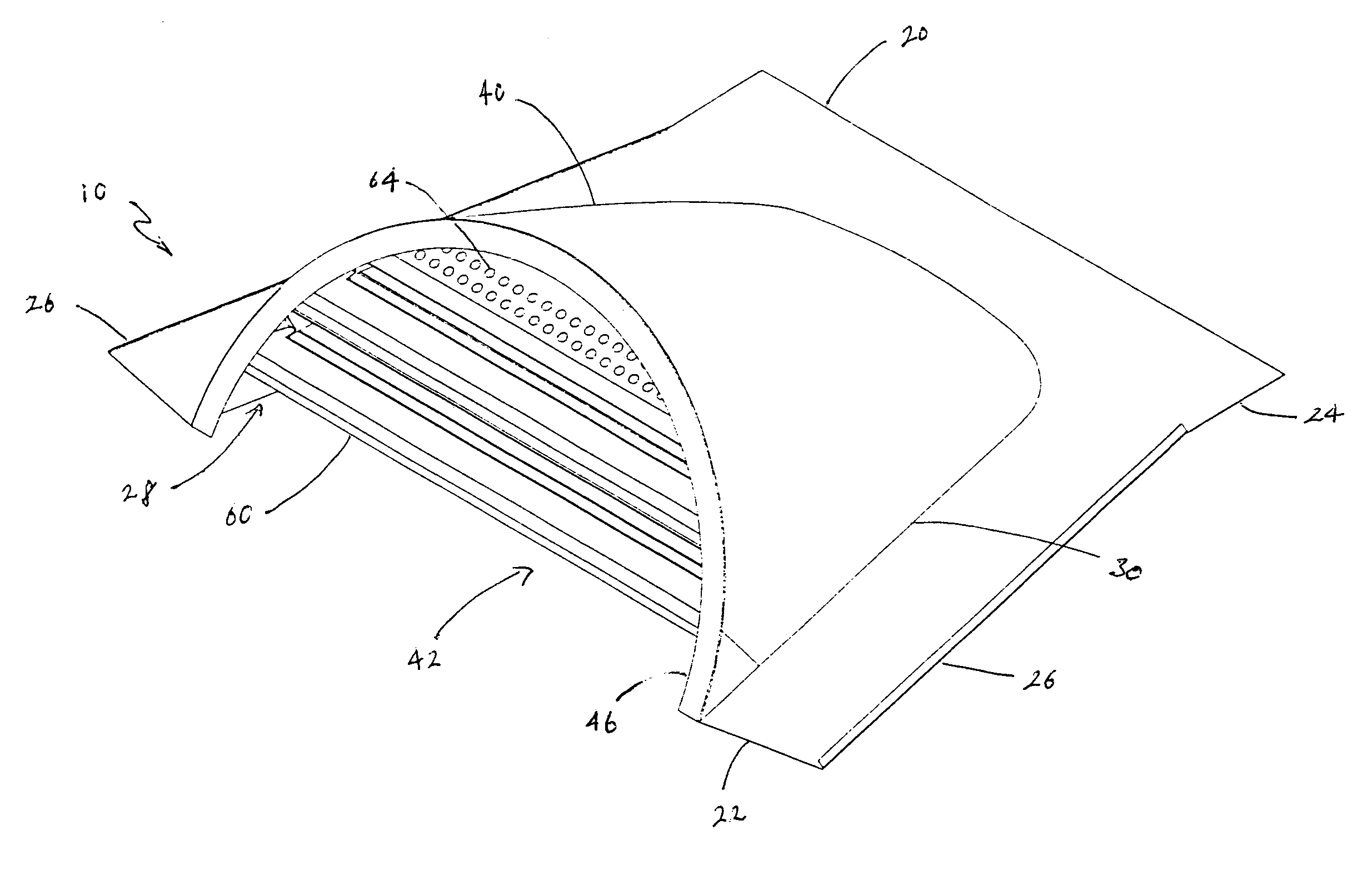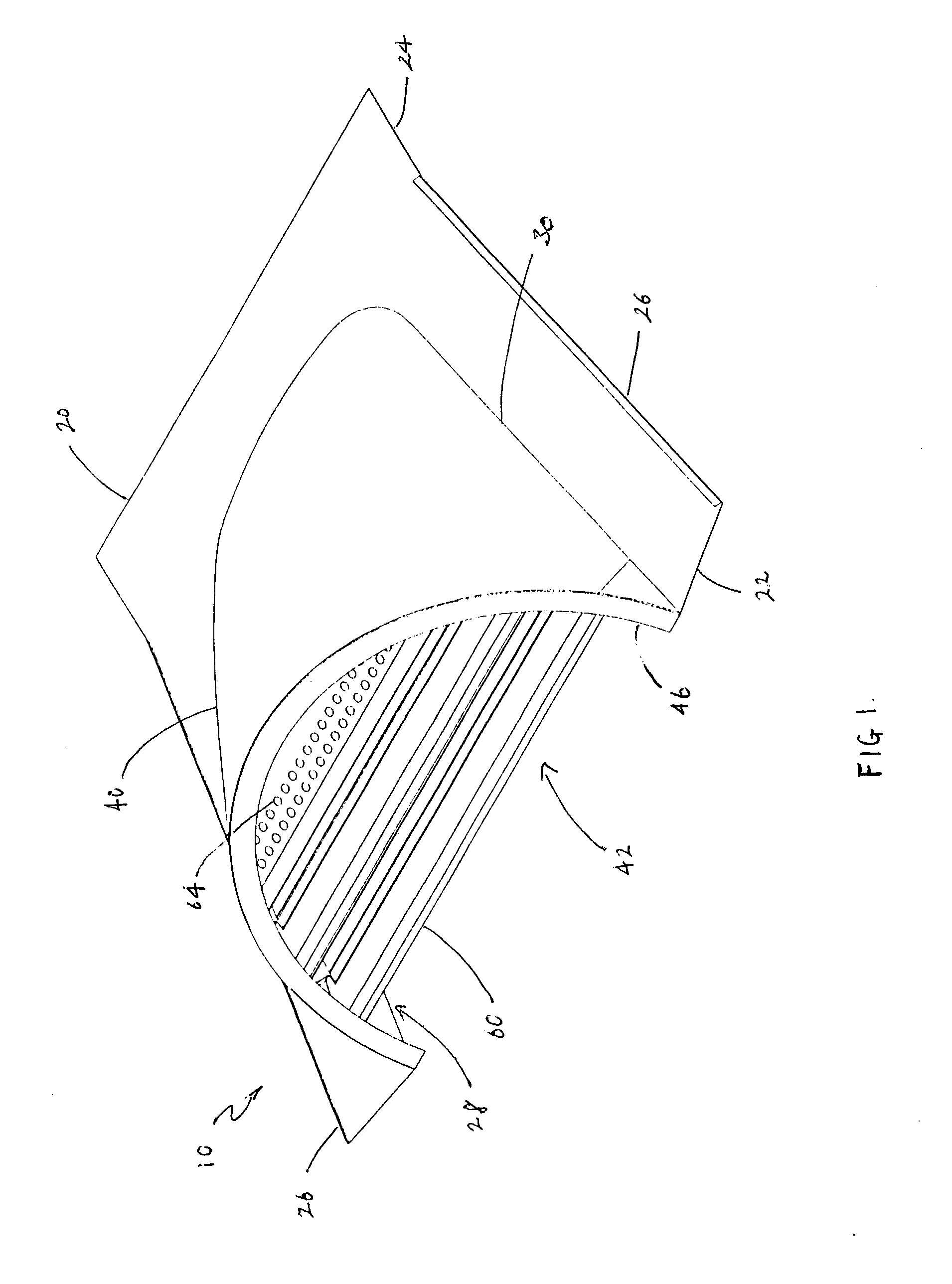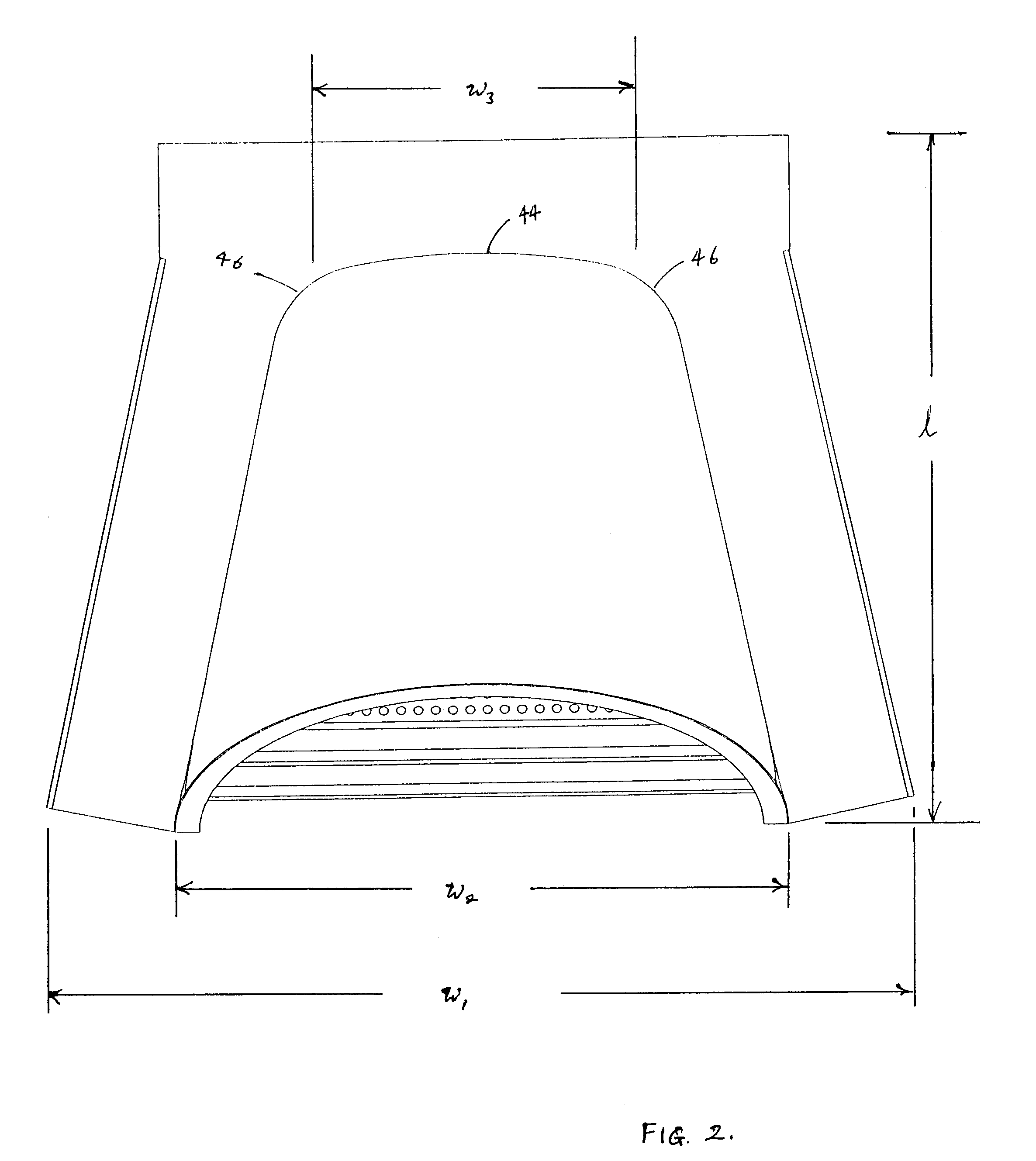Dormer roof ventilator and method thereof
a ventilator and roof technology, applied in ventilation systems, lighting and heating apparatus, heating types, etc., can solve problems such as energy inefficiency, damage to the structural or thermal properties of roof materials, and inability to achieve the effect of improving the ventilation of trapped air
- Summary
- Abstract
- Description
- Claims
- Application Information
AI Technical Summary
Benefits of technology
Problems solved by technology
Method used
Image
Examples
Embodiment Construction
[0037]Referring to FIG. 1, a roof ventilator 10 according to a preferred embodiment of the present invention is shown. Roof ventilator 10 includes generally a base frame 20, a cover 40, and a plurality of louvers or slats 60.
[0038]In the preferred embodiment the base frame 20 includes a front end 22, a rear portion 24, and two side portions 26. As shown in FIG. 1, the front end 22 is wider than the rear portion 24, thus forming generally a trapezoidal shaped frame. By way of example only, the proximate dimensions of the base frame 20 is 28 inches in length (l) and 36 inches wide (w1) as defined in FIG. 2. One of skill in the art would recognize that the roof ventilator 10 can be of any proportionate size so as to accommodate various roof openings.
[0039]The base frame 20 has an opening 28 therein defined by side portions 26 and rear portion 24, the opening 28 adapted to cooperate with an opening in a roof. More specifically, the opening 28 will be defined by the contiguous edge 30 be...
PUM
 Login to View More
Login to View More Abstract
Description
Claims
Application Information
 Login to View More
Login to View More - R&D
- Intellectual Property
- Life Sciences
- Materials
- Tech Scout
- Unparalleled Data Quality
- Higher Quality Content
- 60% Fewer Hallucinations
Browse by: Latest US Patents, China's latest patents, Technical Efficacy Thesaurus, Application Domain, Technology Topic, Popular Technical Reports.
© 2025 PatSnap. All rights reserved.Legal|Privacy policy|Modern Slavery Act Transparency Statement|Sitemap|About US| Contact US: help@patsnap.com



